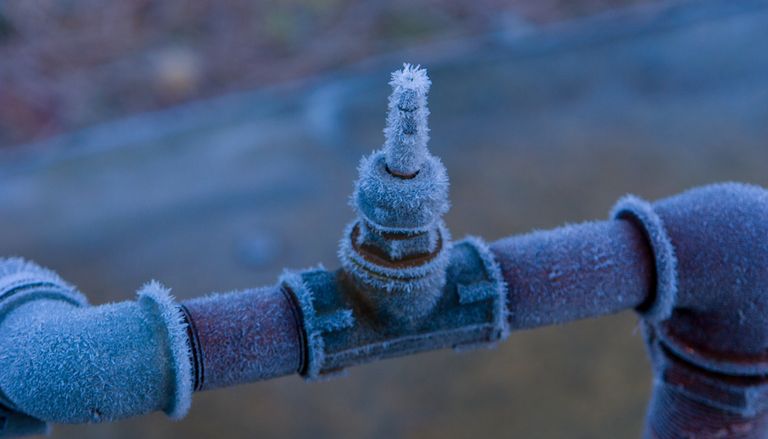How to Defend Pipes from Freezing: Expert Guidance
How to Defend Pipes from Freezing: Expert Guidance
Blog Article
We've uncovered the article about How to Prevent Your Pipes From Freezing below on the internet and accepted it made perfect sense to share it with you in this article.

Cold weather can ruin your plumbing, specifically by freezing pipes. Below's how to avoid it from taking place and what to do if it does.
Introduction
As temperature levels decline, the risk of icy pipes increases, possibly bring about pricey repair work and water damage. Recognizing how to avoid icy pipelines is important for house owners in cold climates.
Understanding Icy Pipelines
What causes pipelines to freeze?
Pipelines freeze when revealed to temperatures listed below 32 ° F (0 ° C) for extended periods. As water inside the pipes ices up, it broadens, putting pressure on the pipeline wall surfaces and possibly creating them to burst.
Threats and damages
Icy pipelines can result in water system disruptions, residential or commercial property damage, and expensive fixings. Burst pipes can flood homes and cause extensive structural damage.
Indications of Frozen Pipes
Determining icy pipes early can avoid them from breaking.
How to recognize icy pipes
Search for decreased water flow from taps, uncommon smells or noises from pipelines, and visible frost on exposed pipes.
Prevention Tips
Insulating at risk pipes
Cover pipelines in insulation sleeves or utilize warm tape to shield them from freezing temperatures. Concentrate on pipelines in unheated or outside areas of the home.
Home heating techniques
Keep interior spaces adequately heated up, especially locations with plumbing. Open cupboard doors to permit cozy air to distribute around pipelines under sinks.
Safeguarding Exterior Plumbing
Garden hoses and outdoor taps
Disconnect and drain pipes yard tubes before winter. Install frost-proof faucets or cover outside taps with insulated caps.
What to Do If Your Pipes Freeze
Immediate activities to take
If you think icy pipes, maintain faucets open up to soothe pressure as the ice thaws. Utilize a hairdryer or towels taken in warm water to thaw pipes slowly.
Long-Term Solutions
Architectural adjustments
Take into consideration rerouting pipelines away from exterior wall surfaces or unheated locations. Add additional insulation to attic rooms, basements, and crawl spaces.
Updating insulation
Purchase high-quality insulation for pipes, attics, and walls. Correct insulation helps maintain consistent temperature levels and reduces the risk of frozen pipes.
Conclusion
Avoiding frozen pipelines needs aggressive measures and fast reactions. By comprehending the reasons, indicators, and preventive measures, home owners can safeguard their plumbing throughout winter.
5 Ways to Prevent Frozen Pipes
Drain Outdoor Faucets and Disconnect Hoses
First, close the shut-off valve that controls the flow of water in the pipe to your outdoor faucet. Then, head outside to disconnect and drain your hose and open the outdoor faucet to allow the water to completely drain out of the line. Turn off the faucet when done. Finally, head back to the shut-off valve and drain the remaining water inside the pipe into a bucket or container. Additionally, if you have a home irrigation system, you should consider hiring an expert to clear the system of water each year.
Insulate Pipes
One of the best and most cost-effective methods for preventing frozen water pipes is to wrap your pipes with insulation. This is especially important for areas in your home that aren’t exposed to heat, such as an attic. We suggest using foam sleeves, which can typically be found at your local hardware store.
Keep Heat Running at 65
Your pipes are located inside your walls, and the temperature there is much colder than the rest of the house. To prevent your pipes from freezing, The Insurance Information Institute suggests that you keep your home heated to at least 65 degrees, even when traveling. You may want to invest in smart devices that can keep an eye on the temperature in your home while you’re away.
Leave Water Dripping
Moving water — even a small trickle — can prevent ice from forming inside your pipes. When freezing temps are imminent, start a drip of water from all faucets that serve exposed pipes. Leaving a few faucets running will also help relieve pressure inside the pipes and help prevent a rupture if the water inside freezes.
Open Cupboard Doors
Warm your kitchen and bathroom pipes by opening cupboards and vanities. You should also leave your interior doors ajar to help warm air circulate evenly throughout your home.

I'm very taken with How to prepare your home plumbing for winter weather and I am assuming you enjoyed the new entry. Sharing is caring. You never know, you will be helping someone out. Thanks for your time. Kindly check our website back soon.
Call Today Report this page